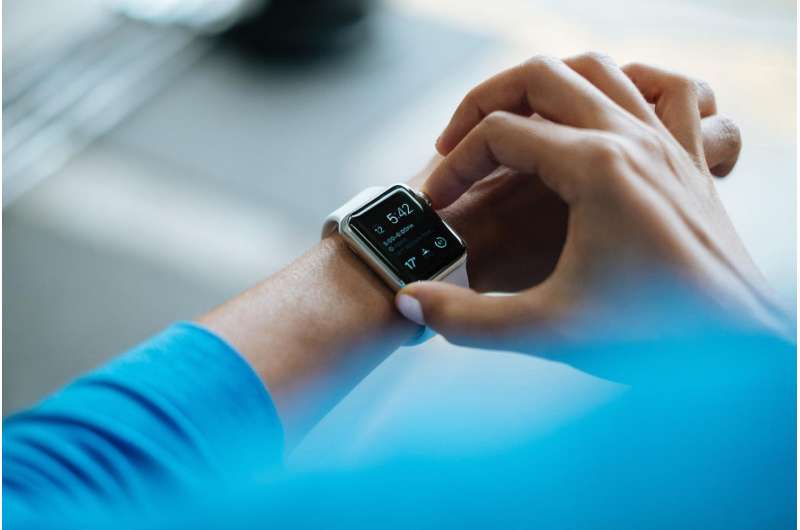This article has been reviewed according to Science X's editorial process and policies. Editors have highlighted the following attributes while ensuring the content's credibility:
fact-checked
trusted source
proofread
Non-exercise activity thermogenesis detection using a smartwatch

A novel smartwatch system clocks your activity more precisely and could offer you a better perspective on your activity levels than simply counting your 10,000 steps or how long you stay in bed.
Writing in the International Journal of Ad Hoc and Ubiquitous Computing, a team from India and the UK, introduce a novel system designed to reshape how smartwatches interpret and categorize our daily activities. The system has the potential to improve the way we monitor our physical activity as well as perhaps leading to new applications in the broader wearable technology sector.
Ankita Dewan of IIT Ropar in Rupnagar, India, Venkata M.V. Gunturi of the University of Hull, UK, and Vinayak Naik of BITS Pilani in Goa, India, have focused on distinguishing between non-exercise activity thermogenesis (NEAT) and non-NEAT activities recorded by smartwatches.
NEAT activities, also known as non-exercise physical activity (NEPA), involve energy expenditure during routine tasks like doing common hobbies, working on a laptop, using a smartphone, cooking, eating, standing instead of sitting, walking around, climbing stairs, doing chores, and fidgeting.
The opposite, which might call non-NEAT, non-NEPA, activities encompasses more formal exercising such as running, cycling, swimming, and gym activities, for instance. These are usually intentional and structured exercises aimed at improving cardiovascular fitness, strength, and overall health.
Unlike previous studies that overlooked specific NEAT activities, this new approach uses lower-frequency data sampling to address the limitations of earlier models.
The team has thus been able to delve into critical parameters including classification features, data sampling frequency, upload rate, and window length to improve classification accuracy. At the same time, they have also considered how to reduce power consumption and so extend battery life for the smartwatch. At a current of 33 Amps per hour, 87% is feasible. However, 97% accuracy is possible at a higher energy cost of 37 Amps per hour.
The system defines several novel activity categories not usually adopted by fitness apps, which tend to focus on walking, running, and cycling, for instance. These NEAT activities are cooking, sweeping, mopping, climbing stairs, eating, driving or being a passenger in a car, working on a laptop or phone, and watching TV. The smartwatch's sensors can be tuned to recognize such activities.
The research presents a practical and innovative approach to activity recognition, addressing challenges in existing models.
The implications lie in the potential for improved user experience, battery efficiency, and more informed decision-making regarding parameter settings to help the user determine how active they are with a view to modifying their habits and perhaps improving their overall physical health.
More information: Ankita Dewan et al, NEAT activity detection using smartwatch, International Journal of Ad Hoc and Ubiquitous Computing (2024). DOI: 10.1504/IJAHUC.2024.136141




















